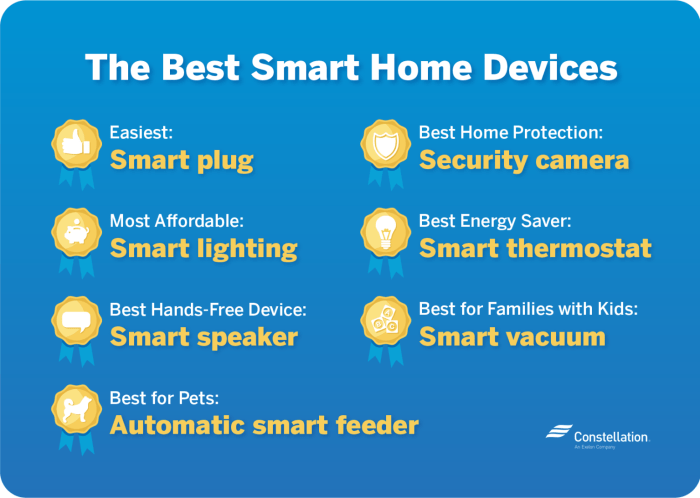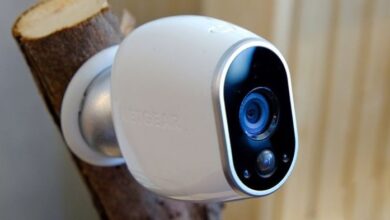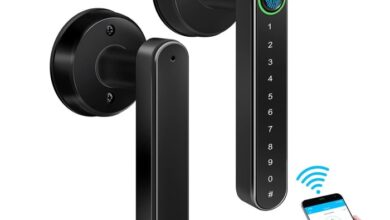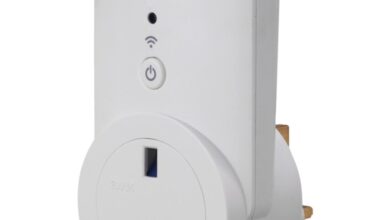Smart Home Devices The Future of Living
Smart Home Devices are rapidly transforming how we live, offering unprecedented convenience and control over our homes. From energy-efficient lighting to advanced security systems, the possibilities seem endless. This exploration delves into the heart of this technological revolution, examining the functionality, security, and future potential of smart home ecosystems. We’ll uncover the benefits, address common concerns, and equip you with the knowledge to navigate this exciting landscape.
This journey will cover the evolution of smart home technology, comparing different brands and their interoperability, while also addressing crucial aspects like security and privacy. We’ll examine user experience, market trends, and the ever-evolving landscape of emerging technologies, such as AI and voice control, shaping the future of smart homes. Ultimately, we aim to provide a comprehensive understanding of smart home devices, their impact on our lives, and their potential to create more sustainable and efficient living spaces.
Defining Smart Home Devices
Smart home devices represent a significant technological leap, transforming our living spaces into interconnected ecosystems of convenience and control. These devices leverage various technologies, including internet connectivity, sensor networks, and artificial intelligence, to automate tasks, enhance security, and provide a more comfortable and efficient living experience. Their impact extends beyond simple automation, offering insights into energy consumption, security vulnerabilities, and even our daily routines, ultimately improving our lives in subtle yet powerful ways.The core functionality of smart home devices hinges on their ability to communicate and interact with each other and with users, often through a central hub or app.
This interconnectedness allows for remote control, automation, and data analysis, all contributing to a more personalized and responsive home environment. The technological underpinnings are diverse, ranging from basic Wi-Fi and Bluetooth connectivity to more advanced protocols like Zigbee and Z-Wave, each offering unique advantages in terms of range, power consumption, and data security.
Categories of Smart Home Devices
Smart home devices span a wide range of applications, broadly categorized into several key areas. Understanding these categories helps to appreciate the breadth and depth of the smart home ecosystem. Each category utilizes specific technologies and addresses unique needs within the home.
- Smart Lighting: This encompasses LED bulbs, smart switches, and lighting systems capable of adjusting brightness, color temperature, and even scheduling based on user preferences or environmental factors. For example, Philips Hue offers a comprehensive range of smart lighting solutions, allowing users to create customized lighting scenes for different moods or times of day.
- Smart Security: This category includes smart locks, security cameras, motion detectors, and alarm systems that provide enhanced home security through remote monitoring, automated alerts, and integrated control. Ring, for instance, provides a well-known ecosystem of security devices, integrating cameras, doorbells, and alarm systems for a holistic security approach.
- Smart Entertainment: Smart TVs, streaming devices, and smart speakers are key players here, enabling seamless integration of entertainment systems, voice control, and personalized content recommendations. The integration of platforms like Alexa and Google Assistant has greatly simplified the control and management of entertainment systems.
- Smart Appliances: Smart refrigerators, washing machines, ovens, and other appliances offer features like remote control, automated scheduling, and energy monitoring, leading to increased efficiency and convenience. For example, smart refrigerators can track inventory and suggest recipes based on available ingredients.
Evolution of Smart Home Technology
The journey of smart home technology has been marked by significant advancements, evolving from rudimentary automated systems to sophisticated AI-powered platforms. Early prototypes focused on individual automation tasks, such as programmable thermostats, but lacked the interconnectedness and data analysis capabilities of modern systems. The advent of widespread internet access and the development of robust communication protocols paved the way for the emergence of integrated smart home platforms.The rise of cloud computing and the development of powerful mobile apps further accelerated the adoption of smart home technology, allowing users to control and monitor their devices from anywhere in the world.
Recent advancements in AI and machine learning have enabled more sophisticated features such as predictive maintenance, personalized automation, and proactive security measures. For example, learning thermostats adapt to user preferences over time, optimizing energy consumption and comfort levels. The integration of voice assistants like Alexa and Google Assistant has also significantly simplified the user interface, making smart home technology more accessible to a wider audience.
The future promises even greater integration, personalization, and seamless interoperability between devices and platforms.
Functionality and Interoperability
The smart home revolution promises unparalleled convenience and control, but realizing this potential hinges on the seamless interplay of diverse devices. Understanding the functionalities of individual smart home devices and their ability to communicate with each other is crucial for a truly effective and user-friendly system. This exploration delves into the complexities of smart home interoperability, examining both the successes and challenges in creating a unified and responsive smart home environment.Smart home devices, from simple smart bulbs to sophisticated security systems, offer a wide range of functionalities.
However, these functionalities vary significantly depending on the brand and the underlying technology. A comprehensive understanding of these differences is essential for consumers to make informed decisions and for manufacturers to improve their products. Consider, for instance, the differing levels of voice control, automation capabilities, and integration with other smart home platforms.
Comparison of Smart Home Device Functionalities
The market offers a plethora of smart home devices, each boasting unique features. Amazon’s Alexa-powered devices excel in voice control and integration with Amazon’s vast ecosystem, offering a broad range of skills and functionalities. Google’s Home devices, on the other hand, boast strong integration with Google services, providing seamless control over various aspects of the smart home, including lighting, temperature, and entertainment.
Apple’s HomeKit, known for its focus on security and privacy, offers a robust platform for controlling Apple devices and compatible third-party products. These platforms, while each offering robust functionalities, often lack complete interoperability, limiting the user’s ability to fully integrate different devices and systems. For example, a user might struggle to control a Philips Hue light using an Amazon Echo device without using third-party workarounds.
The Importance of Interoperability in Smart Home Ecosystems
Interoperability, the ability of different systems and devices to work together seamlessly, is paramount for a truly smart home. Without it, the user experience is fragmented and frustrating. Imagine a scenario where controlling your lighting requires one app, your thermostat another, and your security system yet another. This lack of cohesion significantly diminishes the convenience and efficiency that smart home technology promises.
A unified system, on the other hand, allows for centralized control, automation, and a more intuitive user experience. This is especially important as the number of connected devices in a typical household continues to grow exponentially. A study by Statista projects the number of smart home devices to reach billions in the coming years, highlighting the pressing need for robust interoperability solutions.
Challenges and Solutions for Seamless Integration
Achieving seamless integration among various devices and platforms presents significant challenges. Different manufacturers often use proprietary protocols and communication standards, creating compatibility issues. Security concerns also play a significant role, as ensuring data privacy and preventing unauthorized access across multiple platforms is critical. Addressing these challenges requires collaboration among manufacturers, the development of open standards, and robust security measures.
Solutions include adopting universal communication protocols such as Matter, which aims to create a unified standard for smart home devices, and implementing strong encryption and authentication protocols to protect user data. Furthermore, robust cloud-based platforms that act as central hubs for device management and control can play a crucial role in simplifying the integration process.
A Hypothetical Smart Home System with Optimal Interoperability
A hypothetical smart home system designed for optimal interoperability would leverage a common communication protocol like Matter. This would allow devices from various manufacturers—lighting from Philips Hue, a thermostat from Nest, security cameras from Arlo, and entertainment systems from Sonos—to communicate seamlessly with each other and a central control hub. This hub could be a powerful smart speaker or a dedicated smart home control panel.
The system would utilize advanced automation features, learning user preferences and adjusting settings automatically based on time of day, occupancy, and other contextual factors. For example, the system could automatically dim the lights at sunset, adjust the thermostat based on the weather forecast, and lock the doors when the last person leaves the house. This level of integration would not only enhance convenience but also optimize energy efficiency and security.
The system would also incorporate robust security measures, employing end-to-end encryption and multi-factor authentication to protect user data and prevent unauthorized access.
Security and Privacy Concerns

The increasing integration of smart home devices presents a double-edged sword: unparalleled convenience alongside significant security and privacy risks. Understanding these vulnerabilities is crucial for mitigating potential threats and ensuring a safe and private smart home environment. This section delves into the potential security weaknesses inherent in smart home technology, explores the privacy implications of data collection, and provides practical steps to enhance the security posture of your connected home.Smart home devices, by their very nature, are interconnected, creating potential entry points for malicious actors.
These vulnerabilities range from weak default passwords and insecure network protocols to vulnerabilities in the devices themselves, often exploited through firmware flaws. The sheer number of devices in a typical smart home, each potentially representing a point of attack, exponentially increases the overall risk. Consider the scenario of a compromised smart lock, granting unauthorized access to your home, or a hacked smart camera, violating your privacy and potentially exposing sensitive information.
This interconnectedness is both a blessing and a curse, offering convenience but also creating a larger attack surface.
Security Vulnerabilities in Smart Home Devices and Networks
The interconnected nature of smart home devices creates a complex web of potential vulnerabilities. Weak or easily guessable passwords are a common entry point, allowing attackers to gain control of individual devices or even the entire network. Outdated firmware, lacking essential security patches, presents another significant vulnerability. Many devices also utilize insecure network protocols, leaving them susceptible to man-in-the-middle attacks, where an attacker intercepts communication between the device and the network.
Furthermore, vulnerabilities in the underlying software of smart home hubs or central control systems can expose numerous devices simultaneously. Addressing these vulnerabilities requires a multi-faceted approach, focusing on strong passwords, regular firmware updates, and the selection of devices with robust security features.
Privacy Implications of Data Collection by Smart Home Devices
Smart home devices collect vast amounts of data about their users’ habits, routines, and preferences. This data, including location information, activity patterns, and even voice recordings, is often transmitted to cloud servers for processing and analysis. The potential for misuse of this data is considerable, ranging from targeted advertising to identity theft. Furthermore, the lack of transparency in data handling practices by some manufacturers raises concerns about the security and privacy of this sensitive information.
Data breaches involving smart home devices can have severe consequences, potentially exposing personal details and compromising security. Users need to be aware of the data being collected and how it is being used, and choose devices and services with robust privacy policies.
Methods for Enhancing Smart Home Security and Privacy
Strengthening the security and privacy of your smart home requires a proactive and multi-layered approach. This includes using strong, unique passwords for each device, regularly updating firmware, and employing a robust firewall to protect your network. Choosing devices from reputable manufacturers with a strong track record in security is also critical. Consider using a virtual private network (VPN) to encrypt your internet traffic, adding an extra layer of protection.
Additionally, regularly review the privacy settings of your smart home devices and apps, limiting the data being collected and shared. Implementing two-factor authentication whenever possible significantly enhances security. Finally, regularly review your network security, scanning for vulnerabilities and updating security software.
Securing Your Smart Home Network and Devices: A User Guide
To secure your smart home network and devices, follow these steps: First, change all default passwords to strong, unique passwords. Second, enable two-factor authentication wherever possible. Third, regularly update the firmware of all your smart home devices. Fourth, use a strong and reputable router with a robust firewall. Fifth, consider installing a network intrusion detection system (NIDS) to monitor network traffic for suspicious activity.
Sixth, limit the number of devices connected to your network, removing any unnecessary devices. Seventh, regularly scan your network for vulnerabilities using security software. Eighth, carefully review the privacy policies of all smart home devices and apps before using them. Ninth, use a VPN to encrypt your internet traffic. Tenth, educate yourself and your family about potential security risks and best practices for smart home security.
By following these guidelines, you can significantly reduce the risk of security breaches and protect your privacy in your connected home.
User Experience and Adoption
The seamless integration of smart home technology into daily life hinges on a positive user experience. A user-friendly interface, coupled with reliable functionality and robust security, is crucial for driving widespread adoption. Market penetration and future growth are directly influenced by how intuitive and beneficial these systems prove to be for the average consumer.
Factors like ease of setup, intuitive app design, and reliable device performance significantly impact user satisfaction. A frustrating installation process or a complex interface can quickly deter users, leading to abandonment and negative reviews. Conversely, a smooth and enjoyable user experience fosters loyalty and encourages word-of-mouth marketing, vital for the continued expansion of the smart home market.
Market Penetration and Trends
Smart home technology penetration varies significantly across geographic regions and demographics. While adoption rates are rising globally, mature markets like North America and Western Europe show higher penetration than developing economies. Key trends include the increasing integration of voice assistants (like Alexa and Google Assistant) into smart home ecosystems, the growing popularity of smart lighting and security systems, and a surge in interest in energy-efficient smart devices.
For example, the rise of smart thermostats, offering programmable temperature control and energy monitoring, reflects a consumer shift towards sustainability and cost savings. This trend is expected to accelerate as energy prices continue to fluctuate and environmental concerns grow. The integration of smart home technology with other platforms, such as health and wellness apps, is also creating new opportunities for growth.
The increasing affordability of smart devices further fuels this expansion.
Barriers to Wider Adoption
Several factors hinder the broader adoption of smart home technology. High initial costs, particularly for comprehensive smart home setups, remain a significant barrier for many consumers. Concerns about data security and privacy are also prevalent, with users hesitant to share personal information with potentially vulnerable systems. Furthermore, the complexity of integrating various devices from different manufacturers – interoperability challenges – can be a major deterrent.
Lack of technical expertise among some users also presents a hurdle, with many finding the setup and management of smart home systems challenging. Finally, the perceived lack of tangible benefits compared to traditional home appliances also contributes to hesitancy among some consumers. For instance, the upfront investment in smart lighting might not be deemed worthwhile by consumers who are content with traditional light switches.
Key Features Contributing to a Positive User Experience, Smart Home Devices
A positive user experience is paramount for successful smart home adoption. Several key features contribute significantly to this, as detailed below:
| Feature | Description | Benefit | User Impact |
|---|---|---|---|
| Intuitive User Interface | Easy-to-navigate app with clear instructions and visual cues. | Reduces frustration and simplifies device control. | Increased user satisfaction and ease of use. |
| Seamless Device Integration | Effortless connection and control of multiple devices from a central hub. | Creates a unified and cohesive smart home ecosystem. | Enhanced convenience and control over home environment. |
| Robust Security and Privacy Features | Strong encryption, two-factor authentication, and data privacy controls. | Protects user data and prevents unauthorized access. | Increased peace of mind and trust in the system. |
| Reliable Performance and Stability | Consistent functionality with minimal glitches or malfunctions. | Ensures a smooth and dependable user experience. | Reduced frustration and improved user confidence. |
Emerging Trends and Future Developments
The smart home landscape is rapidly evolving, driven by advancements in artificial intelligence, connectivity, and user demand for seamless integration and enhanced convenience. These developments are not merely incremental improvements; they represent a fundamental shift in how we interact with our living spaces, paving the way for homes that are not only smarter but also more sustainable and responsive to our individual needs.
The future of smart homes promises a level of personalization and automation previously confined to science fiction.The integration of sophisticated AI and voice control is transforming the smart home experience. AI algorithms are increasingly capable of learning user preferences and proactively adjusting settings, such as lighting, temperature, and entertainment systems, to optimize comfort and energy efficiency. Voice control, meanwhile, offers a hands-free and intuitive interface, allowing users to manage their homes with simple verbal commands.
This ease of use is a key driver of wider adoption, making complex smart home systems accessible to a broader demographic.
AI-Powered Personalization and Proactive Adjustments
AI is moving beyond simple automation, transitioning into a realm of true personalization. Imagine a smart home that anticipates your needs before you even articulate them. Based on learned patterns of behavior, the system might pre-heat your coffee maker as you wake, adjust the lighting to your preferred levels, or even begin playing your favorite music based on your typical morning routine.
This level of proactive management frees up mental energy and contributes to a more streamlined and less stressful daily life. Companies like Google and Amazon are already investing heavily in this area, constantly refining their AI algorithms to enhance the predictive capabilities of their smart home ecosystems. For instance, a smart thermostat learning your daily temperature preferences and adjusting accordingly is a simple yet impactful example of AI personalization.
Enhanced Energy Efficiency and Sustainability
Smart home technology offers significant potential for creating more sustainable and energy-efficient homes. Smart thermostats, for example, can learn your heating and cooling preferences and automatically adjust the temperature to optimize energy consumption without compromising comfort. Smart lighting systems can automatically switch off lights in unoccupied rooms, reducing energy waste. Furthermore, integration with renewable energy sources, such as solar panels, can further enhance energy independence and minimize environmental impact.
The cumulative effect of these technologies can lead to substantial reductions in household energy bills and a smaller carbon footprint. Studies have shown that widespread adoption of smart home energy management systems could significantly reduce overall energy consumption in residential buildings. For example, a study by the Lawrence Berkeley National Laboratory demonstrated substantial energy savings in homes equipped with smart thermostats.
Seamless Integration with Wearables and IoT Devices
The future of smart homes hinges on seamless interoperability between various devices and technologies. Imagine a scenario where your wearable fitness tracker automatically adjusts the lighting and temperature in your home based on your activity level. Or perhaps your smart refrigerator orders groceries automatically when it detects low stock levels, coordinating with your preferred delivery service. This level of interconnectedness requires robust communication protocols and open standards, ensuring that different devices and platforms can communicate and interact effectively.
The growth of the Internet of Things (IoT) is accelerating this trend, creating a vast network of interconnected devices that can be integrated into a comprehensive smart home ecosystem. For instance, integrating a smart lock with a security system and a wearable device allows for remote access control and real-time security alerts. This convergence of technologies is leading to more intuitive, personalized, and responsive smart home experiences.
Smart Home Device Costs and Affordability: Smart Home Devices
The allure of a seamlessly integrated smart home is undeniable, but the financial commitment often presents a significant hurdle. Understanding the cost landscape of smart home technology is crucial for both manufacturers aiming to broaden their market reach and consumers hoping to enjoy the benefits of automation and convenience. This section delves into the pricing structures, influencing factors, and potential strategies for enhancing the affordability of smart home devices.
Cost Comparison Across Brands and Functionalities
Smart home device pricing varies considerably depending on the brand, features, and functionality. For instance, a basic smart bulb from a lesser-known brand might cost around $10, while a high-end, color-changing smart bulb from a premium brand could easily reach $50 or more. Similarly, a simple smart plug might cost $15-$25, while a more sophisticated model with energy monitoring capabilities could cost upwards of $40.
Security systems present a wider range, with basic DIY systems starting around $100 and more comprehensive professionally monitored systems costing several hundred dollars annually. Thermostats show a similar disparity; a basic smart thermostat might cost $150, whereas a high-end model with advanced features could cost over $300. These price differences reflect not only brand reputation but also the complexity of the technology and the level of integration offered.
Factors Influencing Affordability
Several factors significantly impact the overall affordability of smart home technology. The most prominent is the initial investment required to purchase the devices themselves. Consumers need to consider not only the cost of individual devices but also the potential costs of hubs, bridges, or subscriptions needed for certain systems to function. The complexity of installation also plays a role; some devices require professional installation, adding significantly to the total cost.
Furthermore, ongoing maintenance costs, such as replacing batteries or paying for cloud services, should be factored into the overall budget. Finally, the ongoing development and integration of new technologies contribute to the cost, as manufacturers incorporate advanced features and improve performance. For example, the integration of AI and machine learning into smart home devices increases their functionality but also elevates their cost.
Strategies for Enhanced Accessibility
Making smart home technology more accessible requires a multi-pronged approach. Manufacturers can play a crucial role by producing more affordable entry-level devices without sacrificing essential functionality. This could involve simplifying designs, utilizing less expensive components, and streamlining manufacturing processes. Developing open standards and promoting interoperability between different brands is also vital, allowing consumers to mix and match devices without being locked into a single ecosystem.
Government initiatives, such as tax incentives or subsidies for smart home technology installations, could further stimulate adoption, particularly amongst lower-income households. Educational programs and consumer awareness campaigns can help people understand the benefits and potential cost savings associated with smart home technology, encouraging more widespread adoption. Finally, financing options, such as payment plans or leasing programs, can make smart home technology more manageable for consumers with limited upfront capital.
Smart Home Device Price Comparison
| Functionality | Brand | Model | Price Range (USD) |
|---|---|---|---|
| Lighting | Philips Hue | White Ambiance | $15 – $30 |
| Lighting | LIFX | Color 1000 | $50 – $70 |
| Security | Ring | Video Doorbell | $100 – $200 |
| Security | Arlo | Pro 4 | $200 – $300 |
| Thermostats | Nest | Learning Thermostat | $200 – $250 |
| Thermostats | Ecobee | SmartThermostat with Voice Control | $250 – $300 |
| Smart Plugs | TP-Link | Kasa Smart Plug | $15 – $25 |
| Smart Plugs | Wemo | Mini Smart Plug | $25 – $35 |
Smart Home Device Installation and Maintenance
Setting up and maintaining your smart home ecosystem might seem daunting, but with a systematic approach, it’s surprisingly straightforward. Understanding the basics of installation and employing simple maintenance strategies will ensure your smart devices run smoothly and provide years of reliable service, maximizing your investment and enhancing your home’s convenience. This section details the process, common problems, and preventative measures for optimal performance.
Smart Home Device Installation: A Step-by-Step Guide
Installing a smart home device, such as a smart bulb or thermostat, typically involves a few key steps. While specific instructions vary by manufacturer and device, the general process remains consistent. Let’s use a smart bulb as an example. First, you’ll need to download the manufacturer’s app. Then, you’ll need to ensure your smartphone or tablet is connected to your home Wi-Fi network.
Next, screw the smart bulb into the light fixture. The app will guide you through the pairing process, which usually involves holding down the bulb’s button until it flashes, indicating it’s ready to connect. The app will then scan for the device and guide you through the necessary steps to connect it to your Wi-Fi network. Finally, you can customize the bulb’s settings, such as brightness, color temperature, and scheduling, within the app.
The process is similar for other devices, although some, like smart thermostats, might require additional wiring connections.
Troubleshooting Common Smart Home Device Issues
Smart home devices, despite their convenience, can sometimes present challenges. Connectivity problems are among the most frequent. This often stems from Wi-Fi signal strength or interference. A weak signal can lead to intermittent connectivity, slow response times, or complete device failure. Other issues include incompatibility between devices from different manufacturers (lack of interoperability), software glitches requiring app updates or device resets, and hardware malfunctions such as a faulty sensor or a burned-out component in the device itself.
Troubleshooting typically begins with checking the device’s power supply, confirming network connectivity, and verifying app compatibility. If problems persist, contacting the manufacturer’s customer support is advisable. For instance, if your smart lock consistently fails to unlock, checking the battery level and ensuring the Wi-Fi signal reaches the lock are crucial first steps.
Smart Home Device Maintenance Procedures
Regular maintenance is crucial for extending the lifespan and optimal performance of your smart home devices. This involves a combination of software and hardware maintenance. Software maintenance includes regularly updating the device’s firmware and the associated smartphone app. Hardware maintenance often depends on the specific device. For instance, smart bulbs may not require frequent maintenance beyond occasionally checking for loose connections, while smart thermostats might benefit from periodic cleaning of the sensor and fan.
Common Smart Home Device Maintenance Tasks
A proactive maintenance schedule can prevent many issues. The following list summarizes common tasks:
- Regularly update the firmware of your smart devices and associated apps.
- Check Wi-Fi signal strength and address connectivity issues promptly.
- Clean sensors and other external components of dust and debris periodically.
- Replace batteries in battery-powered devices as needed.
- Inspect wiring and connections for damage or looseness.
- Back up your smart home data regularly to prevent data loss.
- Monitor device performance and address any unusual behavior immediately.
Outcome Summary
The smart home revolution is undeniably upon us, promising a future where technology seamlessly integrates into our daily lives, enhancing convenience, security, and sustainability. While challenges remain in areas like interoperability and data privacy, ongoing innovation and increasing consumer adoption point towards a future where smart homes are not a luxury, but a standard. By understanding the capabilities, limitations, and potential of smart home devices, we can harness their power responsibly, creating homes that are both intelligent and truly our own.









